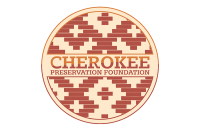WCU master plan: The focus areas
 Over the next decade, WCU hopes to improve its facilities while continuing to showcase the natural beauty in which they sit. Hanbury/WCU photo
Over the next decade, WCU hopes to improve its facilities while continuing to showcase the natural beauty in which they sit. Hanbury/WCU photo
If the proposed master plan is adopted, over the coming years the university will focus its development efforts on five districts described in the document.
Academic Core
Clustered just to the east of the A.K. Hinds University Center and fountain area, the academic core would focus on collaborative learning and prompt some major shifts from the status quo — perhaps most notably at Hunter Library.
The way students do research is changing, said Hanbury President Keith Storms, and Hanbury’s analysis showed that while Hunter Library currently has 95,000 square feet dedicated to books, it only needs about 30,000. There are a lot of empty shelves, books that haven’t been touched in years and books that simply have no use anymore — outdated computer science books, for instance. It’s also badly in need of renovation.
“The library is just not accessible,” said Student Government Association President Rebecca Hart, a member of the Board of Trustees. “It’s not a place students enjoy being. It’s very outdated. It smells weird. It looks weird. It’s super hard to navigate. There’s floors that most students don’t even know exist. You just stumble upon them.”
The consultants recommended moving toward a split-library model, with the pared-down stacks and research library remaining in the Hunter building. A new facility in Lot 33 behind Coulter — a “collaborative learning commons” — would offer much-needed student collaboration space and house the library’s digital collections. While the library’s location provided a welcome refuge from center campus when it was first built, trustees said, over the years campus has grown away from it. Relocating library functions to the center of campus, said Hart, would show students that learning is a priority.
Meanwhile at Hunter, consolidated stacks and storage, together with a relocated Mountain Heritage Center and digital library, would set the stage for renovations transforming Hunter to a key component of a new STEM district. Under the draft plan, Hunter would house a research library, the engineering department, faculty commons, IT support and study space.
Related Items
The currently vacant Moore Building would also be renovated and repurposed, with changes there and at Hunter triggering a domino chain of renovation and reshuffling at buildings throughout the academic core. Listed needs include but are not limited to an interdisciplinary maker space, display space and collaboration space; more lab and classrooms space for the education program; dedicated space for the hospitality and tourism program; and support space to accommodate massive online growth in the business program.
Student Life Core
The student life area sits in the center of campus, including the fountain and fields surrounding it as well as student-centered facilities such as A.K. Hinds University Center, Reid Pool and the Campus Recreation Center. Hart told trustees the current campus lacks welcoming space for students to hang out and study — future moves should address that issue, she said.
“We have a university center, but because we’re a regional institution, a lot of that is program space. But also it’s used by people outside the university that are coming in and renting that space,” Hart said. “It’s not really a spot for students to hang out.”
The draft plan calls for expanding the university center to provide more “living room” type areas for students and enhancing the fountain area to boost its existing appeal, while also making it a more inviting hangout space for students. Renovations to the bookstore building would make way for a new, expanded health center, and additional recreation fields as well as physical education and recreation program space replacing Camp Lab Gym are also recommended.
Campus Entry and Community Engagement
This section parallels N.C. 107 from just north of the H.F. Robinson administration building to the Cordelia Camp building. The draft plan proposes a new building near the campus entrance to function as an alumni, meeting and event center, perhaps also including rental space and housing the Mountain Heritage Center , currently located at Hunter Library.
While the plan does not call for any major renovations to the white administration building, consultants did recommend some “small moves” to establish a sense of arrival. Suggestions include streaming vertical purple banners down the building, nighttime uplighting and relocating the small Catamount statue in the roundabout to a pedestrian-friendly spot, replacing it with a larger mascot sculpture.
The consultants also pointed out the “lackluster” pedestrian bridge spanning Cullowhee Creek as a missed opportunity to create a “wow moment” on campus. They suggested replacing it with a wooden structure that gives off a “front porch atmosphere” and features plenty of nighttime lighting to improve student comfort and safety.
South Campus Entry and Athletics
This area includes the southernmost campus access from N.C. 107 and the athletics facilities clustered around it. The master plan names a new football team facility, renovations to Whitmire Stadium and new locker rooms for soccer, track and field, golf and rec teams as its top priorities, with Ramsey Center renovations and a new baseball team facility coming in on the second tier. Some of the team facilities are currently located at Camp Lab Gym, but that aging building is slated for demolition, so those services will need a new home.
Campus entry and old Cullowhee
Including a triangle of land at the back entrance to campus from Old Cullowhee Road, the Old Cullowhee zone has the potential to symbolize WCU’s relationship to the local community and natural landscape in which it nestles.
If a river park project in the area proposed by the community group CuRVE comes to pass, it could prove a “great catalyst for engagement,” said Morgan. Base Camp Cullowhee could potentially set up an outpost there, offering rental equipment and even guided expeditions. Ideally, she said, it would be a place for the surrounding community to engage with their backyard university on a day-to-day basis.
A previous version of this story stated that SGA President Rebecca Hart is a nonvoting member of the Board of Trustees. Hart is in fact a voting member of the board.













